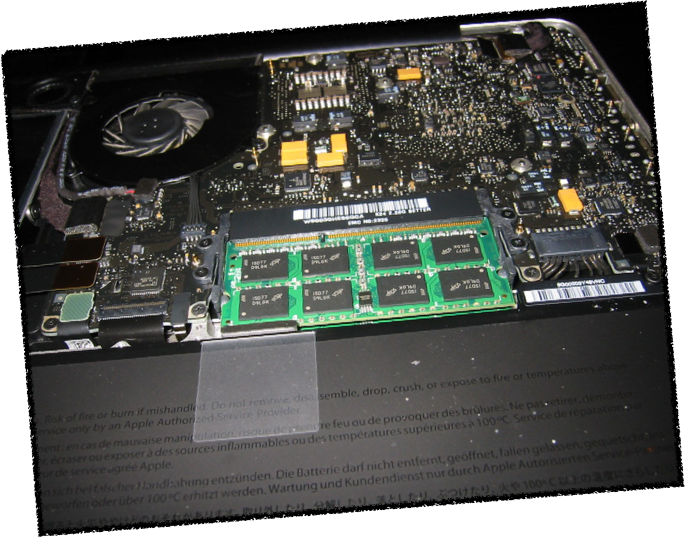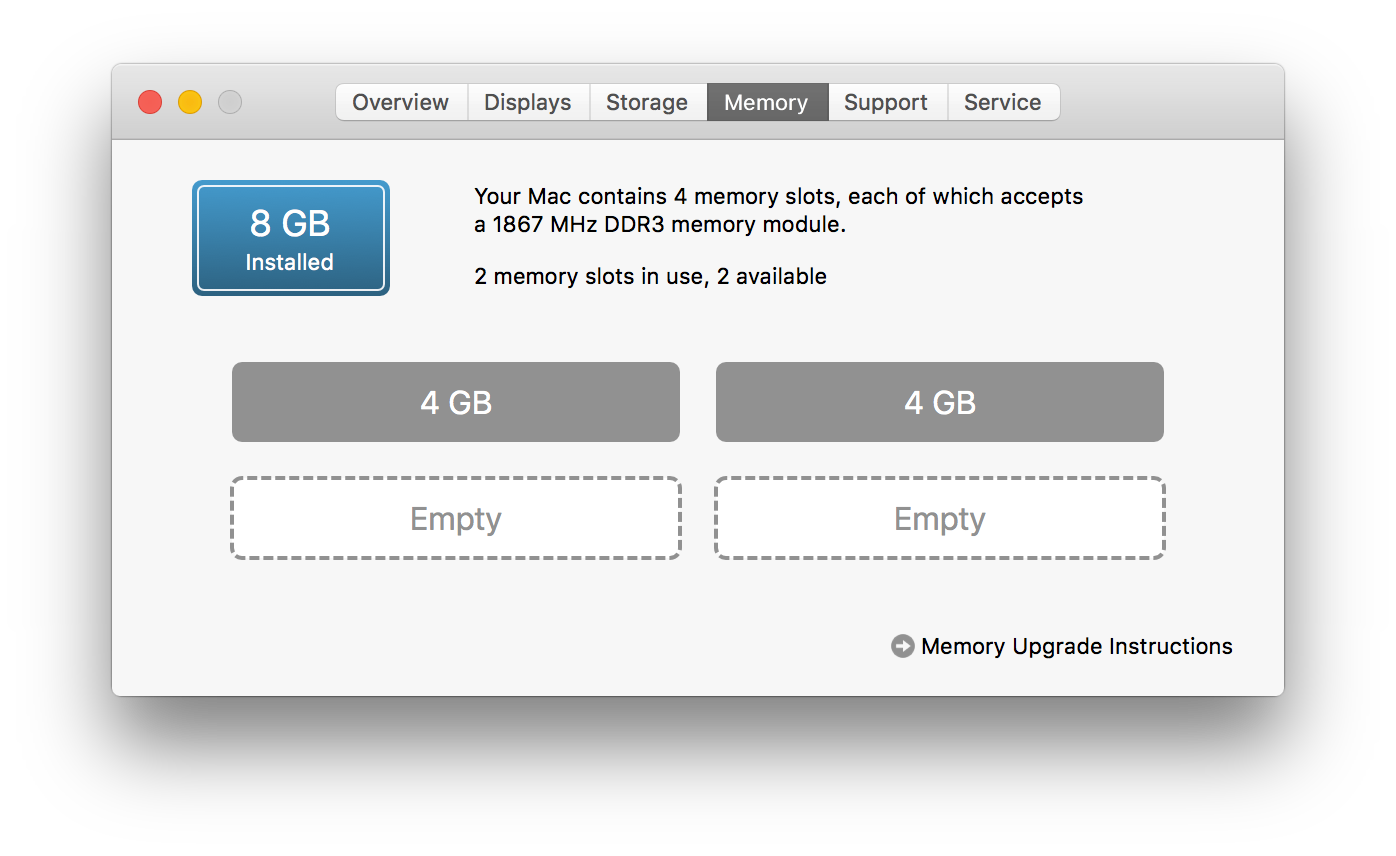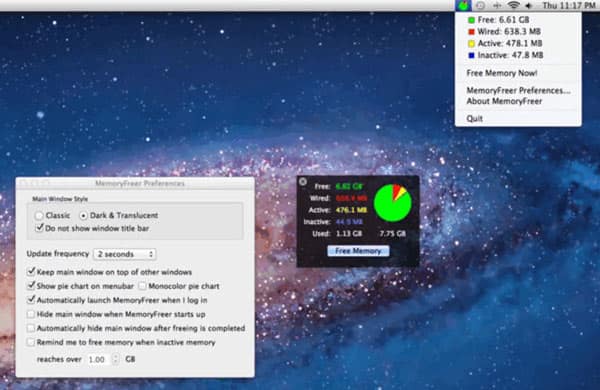
Run it and check the tabs to see for yourself if you have an Intel Mac. On older and less powerful Macs, Activity Monitor uses a lot of CPU, memory and energy. There is no doubt that Activity Monitor is a great app, but it is not one that you would want to leave running on the desktop all day because it uses system resources and desktop space. You can easily see technical information like CPU, memory, disk, network and even energy (battery) usage.
#APPLE MEMORY MONITOR MAC#
There are many questions you might need the answer to when using your Mac and Activity Monitor can answer all of them.

Is the CPU busy? Is memory or disk space running short? Which apps are using the most CPU and RAM? Why is a file taking so long to download? Is it the network speed? What is the time remaining on a MacBook’s battery? While much of that is valid for Crucial, some of us have had some issues with Crucial memory in the past that I haven't encountered with OWC.Īre you ready to ditch Intel for Apple silicon? Be sure to check out our list of the best Macs you can currently buy.Activity Monitor on the Apple Mac is a useful utility for seeing what is going on under the macOS user interface, but it is too demanding of resources. We'd select the OWC kit because it's a reliable product with a long-standing presence in the Mac community. If you want more headroom for things like more intensive applications or more browser tabs, most consumers, and indeed, most professionals, will be okay with the OWC 32GB DDR4 RAM kit. It's only one stick, but it leaves your other RAM slots open if you want to expand up to 64GB by just buying this kit three more times. Best memory for 2020 iMac (27-inch): Our recommendationįor most people, 16GB will be enough, and because of that, we'd recommend the OWC 16GB DDR4 RAM kit. If you're working professionally in video or high-end development, consider 64GB or 128GB. If you spend a lot of time on your computer, 32GB should give you the headroom to handle anything that's thrown at you, even video and audio editing, without having to worry. For nearly every student out there and most professionals, it's all you'll need. I'd say that if you can swing it, get 32GB. Plus, if you do have that one intensive application for work or school that needs a lot of RAM (and that could be Chrome), the more you have, the less your system chugs to a halt when you're using it. More RAM makes it easier to have more applications open at once, have more browser tabs open, can lead to faster waking from sleep, and can just help your computer run faster.


Why? Because your work is going to be more intensive than you think it is.
#APPLE MEMORY MONITOR UPGRADE#
While you can get away with 8GB if your computer use is relatively light, if your iMac will do any amount of work, either professionally or for school, you'll want to upgrade to at least 16GB of RAM. How are you going to use your iMac? Most people will be fine upgrading to 16GB of RAM. When thinking about how much memory you should actually get, it comes down to a question of purpose. Every other spec is going to be the same except for the actual amount of memory you get. You shouldn't notice a difference.Īs long as the RAM you get follows these specs, the only decision you have to make is about capacity. It has more to do with how some companies round a particular memory value than any actual spec. This memory is still compatible with your iMac. Instead, you'll find RAM with PC4-21300, but don't worry.

Now here's the thing: nobody sells RAM marked with PC4-21333.


 0 kommentar(er)
0 kommentar(er)
